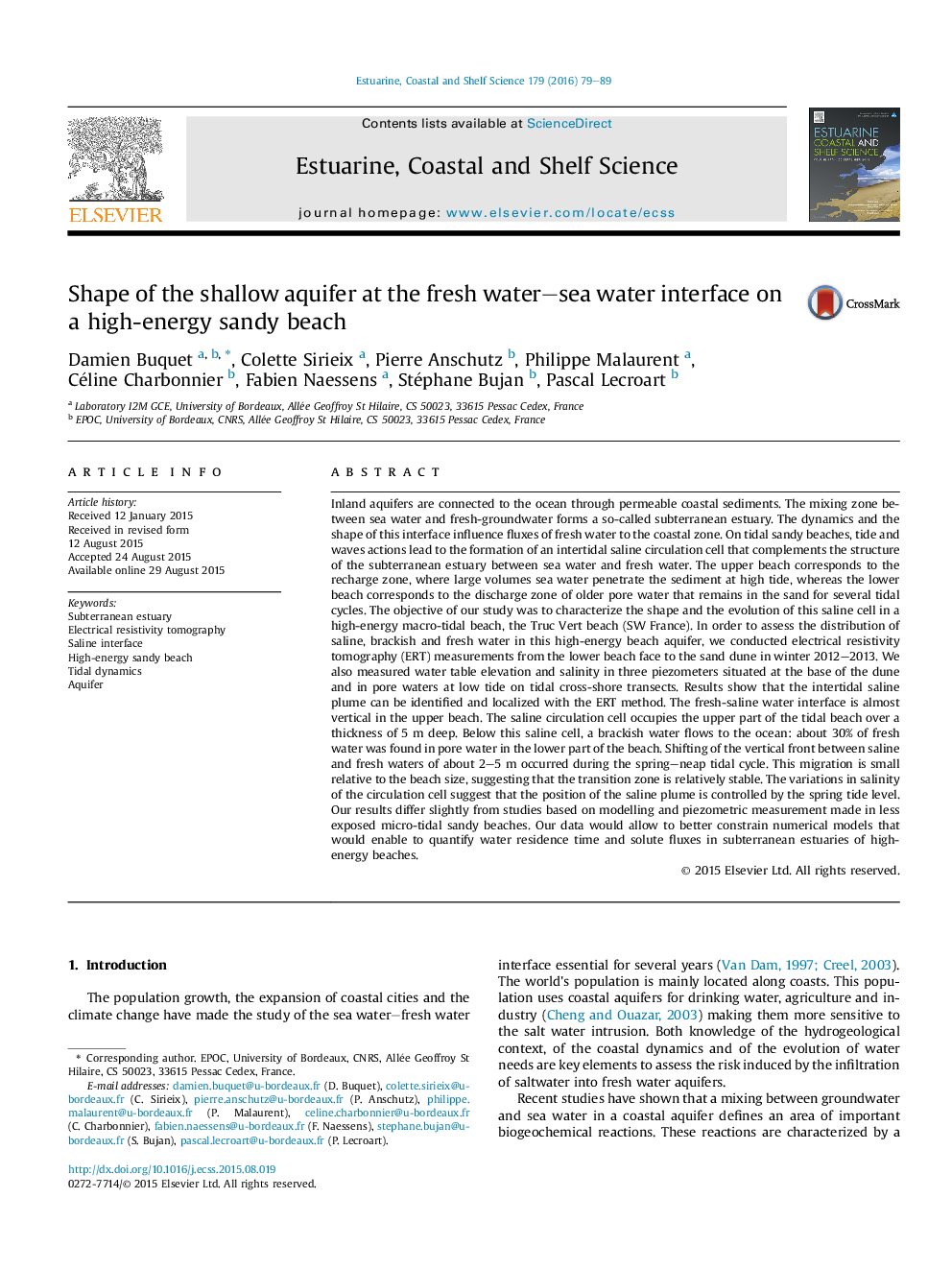| کد مقاله | کد نشریه | سال انتشار | مقاله انگلیسی | نسخه تمام متن |
|---|---|---|---|---|
| 4539194 | 1626620 | 2016 | 11 صفحه PDF | دانلود رایگان |
Inland aquifers are connected to the ocean through permeable coastal sediments. The mixing zone between sea water and fresh-groundwater forms a so-called subterranean estuary. The dynamics and the shape of this interface influence fluxes of fresh water to the coastal zone. On tidal sandy beaches, tide and waves actions lead to the formation of an intertidal saline circulation cell that complements the structure of the subterranean estuary between sea water and fresh water. The upper beach corresponds to the recharge zone, where large volumes sea water penetrate the sediment at high tide, whereas the lower beach corresponds to the discharge zone of older pore water that remains in the sand for several tidal cycles. The objective of our study was to characterize the shape and the evolution of this saline cell in a high-energy macro-tidal beach, the Truc Vert beach (SW France). In order to assess the distribution of saline, brackish and fresh water in this high-energy beach aquifer, we conducted electrical resistivity tomography (ERT) measurements from the lower beach face to the sand dune in winter 2012–2013. We also measured water table elevation and salinity in three piezometers situated at the base of the dune and in pore waters at low tide on tidal cross-shore transects. Results show that the intertidal saline plume can be identified and localized with the ERT method. The fresh-saline water interface is almost vertical in the upper beach. The saline circulation cell occupies the upper part of the tidal beach over a thickness of 5 m deep. Below this saline cell, a brackish water flows to the ocean: about 30% of fresh water was found in pore water in the lower part of the beach. Shifting of the vertical front between saline and fresh waters of about 2–5 m occurred during the spring–neap tidal cycle. This migration is small relative to the beach size, suggesting that the transition zone is relatively stable. The variations in salinity of the circulation cell suggest that the position of the saline plume is controlled by the spring tide level. Our results differ slightly from studies based on modelling and piezometric measurement made in less exposed micro-tidal sandy beaches. Our data would allow to better constrain numerical models that would enable to quantify water residence time and solute fluxes in subterranean estuaries of high-energy beaches.
Journal: Estuarine, Coastal and Shelf Science - Volume 179, 20 September 2016, Pages 79–89
